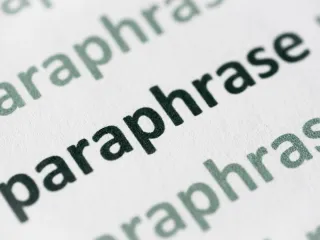In the digital world, differentiating between artificial intelligence (AI) and human-written content has become crucial. The use of AI content detectors has emerged as an indispensable tool for teachers, editors, copywriters, managers, and students, enabling them to ensure all the content they encounter is credible and written by a human source.
However, how reliable are AI detectors? These tools are supposed to be able to differentiate between text written by models like ChatGPT (created by OpenAI) and Google Bard, but how reliable are they? And what happens when you get a false positive?
In this article, we’ll explore the world of AI content generation and AI content detection. We’ll discuss the potential benefits and limitations, and what’s at stake for companies, writers, and students. Search engine optimization (SEO) for example, is an often neglected component when it comes to AI generated writing.
We’ll analyze the best AI content detectors on the market and explain what will set Quetext apart from the rest.
How Does AI Detection Work?
AI content detection works by utilizing sophisticated algorithms and machine learning techniques to analyze and differentiate between text written by a human and that which has been composed by AI models.
At the core of the programming of these detection models are the processes of ChatGPT and Google Bard. These two highly popular AI writing services are trained on datasets from various sources. The detection models can learn those patterns and detect, to a degree, when one of these services has been used.
AI detectors use NLP techniques, also known as natural language processing techniques, as well as machine learning algorithms in order to evaluate the characteristics of a given piece of text.
These detectors then compare that text against known AI-written content, noting any features like sentence structure, the use of vocabulary, semantic consistency, and more, which are all analyzed to determine whether a piece of content is AI-generated text.
One of the elements that AI detectors search for is something known as burstiness. This is a sudden increase in the quality of a piece of writing and its coherence.
These moments of increased writing quality may indicate that AI has been involved in writing a piece of text.
Other elements they look for include perplexity, which is concerned with how predictable the next work in a line of text is. Usually, the perplexity score of an AI-written text is low compared to a human-written text (as humans are far more unpredictable than computers are). In simple terms, if a word or phrase is used in a piece of writing written in AI, it’s far more likely to appear later.
Burstiness and perplexity are two of the easiest ways to note whether or not something is written by AI. Although, it should be noted that repeated words and phrases or sudden moments of clarity in a piece of writing are not always going to be an indicator of computer-written content and should not be isolated as the only way to determine the trustworthiness of a piece of text.
As users of AI detection software will note, false positives in AI detection are possible and are fairly common. In the next lines, we’ll explore the dangers of false positives in AI detection and why it can be dangerous to depend on a less-than-reliable AI detection model.
The Dangers of False Positives in AI Detection
Unfortunately, false positives are something that happens in the world of AI content detection. AI detector reliability is still fairly poor.
These are instances in which an AI detector falsely suggests that a piece of writing, or part of a piece of writing, has been composed by an AI program. If a false positive occurs, the writer might be accused of plagiarism and academic dishonesty when they’ve made no mistake on their end.
There are many businesses and schools that, at this moment, are using AI detectors in order to maintain academic integrity and identify instances of plagiarism in student submissions. These detectors can be quite helpful. But, at the same time, it can also result in false positives that can unjustly implicate students or employees who have genuinely produced their own work.
This is also an issue that professional writers and educators face. A false positive can be incredibly damaging to someone’s reputation, leading to an arms race that could impact their employability and future.
It’s for the reasons mentioned above that it is highly important to choose reliable AI detectors that are capable of tracking watermarking and which are updated regularly in order to minimize false positives.
How Accurate are AI Detection Tools?
As discussed above, an AI writing detector is an important tool for distinguishing between human-written material and AI writing. But it’s not always easy to do so, especially when some content detectors are less reliable than others at distinguishing AI writing tools.
All AI detectors use sophisticated algorithms and techniques, as noted above, to make the best decisions possible about pieces of text. But, our content detection tool is more reliable than others.
On the market, users can try out top-rated AI detection models that are produced by Copyleaks, Originality.ai, Turnitin, Hugging Face, ZeroGPT, and GPTZero.
Among the many AI detectors on the market, Quetext will have a robust AI detection tool that works with the leading AI content generators today and tomorrow. By training our AI content detector to work with multiple language models used by popular artificial intelligence bots, our tool will confidently separate AI generated text from human written text.
Our technology works to identify telltale signs of AI, which may include sentence structure, grammar, tenses, vocabulary, repeated phrases, and other signals, at the sentence and document level, to provide our subscribers with confidence in using our tool over others in the industry.
Determining Accuracy
In mere moments, our AI detector will provide our subscribers with a confidence score for their unique content. Using advanced algorithms, our detector will analyze entire documents in detail, providing fast and reliable results.
Based on those results, you can take immediate action to maintain the integrity and credibility of your content. Quetext’s AI detection program will use the most up-to-date processing algorithms paired with an intuitive dashboard in order to make it easy to identify AI content vs. human-generated content.
How to Detect AI Content with Confidence
As we’ve explored, knowing whether a piece of writing was written by AI is of the utmost importance in today’s digital marketplace. All AI tools are fairly simple to use, but others are more intuitive as a plagiarism checker than others.
Using Quetext to Check for Plagiarism
Quetext is well-known for its high-quality plagiarism checker. It’s an essential tool for teachers, editors, and writers to use in order to verify the originality of all of their writing. It checks a submitted piece of text against a huge database of information, including seeking out instances of paraphrasing.
Pricing never exceeds $10/month, and you can try the tool for free.
The tool is very easy to use, only requiring a few clicks to fully assess a piece of writing. Here is a step-by-step guide to using Quetext’s plagiarism tool:
- Visit Quetext.com and click on the Plagiarism Detection Tool.
- Upload or paste a piece of text that you want to check.
- Click the Analyze button at the bottom of the page in order to scan the piece of writing.
- Wait a few minutes as Quetext analyzes the writing.
- Read your completed plagiarism report, which includes highlighted instances of plagiarism and the source of the writing.
Once you have your report, you can determine, based on what Quetext provides you, whether or not you’re looking at true examples of plagiarism.
Using Quetext to Check for AI Content
Quetext’s AI-detection tool will be a state-of-the-art option for managers, writers, students, teachers, and editors to use in order to ensure that all text they’re reading has been written by human beings and not Google Bard or ChatGPT.
Our AI content checker will provide our subscribers with the confidence to know the content they check was written by a human.
Building upon our language-processing expertise, Quetext AI detection looks at content wholistically, and sentence-by-sentence, to provide users with a greater degree of certainty than other AI detectors.
Whether an entire document, or one small section appears to be AI generated, Quetext will call it to your attention.
Quetext will offer an advanced detection tool, using comprehensive analysis of features to produce the most accurate results. To learn more about our up and coming AI detection tool, visit our AI Detector Page.









